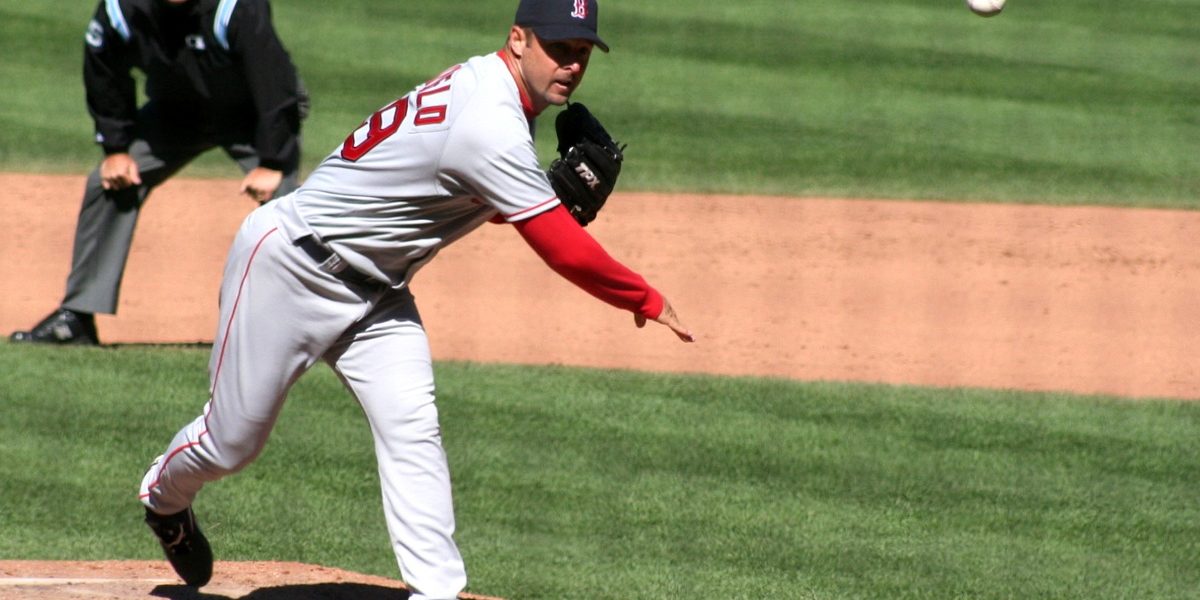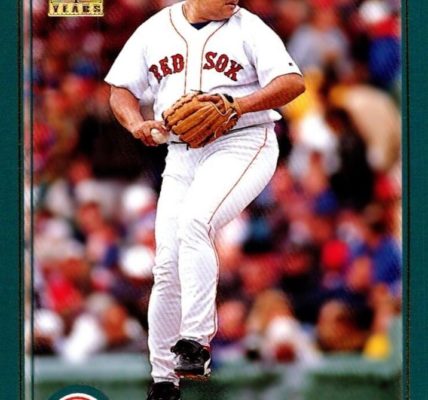October First was the day that the knuckleball died. On this date in the year 2023 the world lost a great man in Tim Wakefield, one whom baseball purists should remember forever. The modern sorcerer of this elusive pitch, Tim left us too soon at 57, taken by an aggressive brain cancer that was only publicly revealed three days before his death. It seems a cruel twist of fate that a man who had mastered the unpredictable was taken by something so unforeseen.
Today I want to mourn the loss of an athlete whose talent revolved around the game’s most unpredictable pitch: the knuckleball. Starting as a first baseman and later evolving into a knuckleball specialist, Wakefield’s story is a testament to reinvention, resilience, and longevity. While his stats might not scream “Hall of Famer” at first glance, there’s more to Wakefield than the numbers. His knuckleball was a metaphor for a career that danced on its own terms, never swayed by the fast-paced, power-hitting world of modern baseball.
I remember the first time I witnessed the mesmerizing magic of the knuckleball. It wasn’t actually in a real baseball game, but rather in one of the baseball sim games of my childhood, Hardball 6. While the power pitching of legends like Pedro Martinez were undoubtedly thrilling, Wakefield’s unassuming yet mesmerizing knuckleball would soon hold a special place in my heart. This pitch, floating and dancing to its own tune, was unpredictable, much like the game of life itself. It was also unbelievably nasty in Hardball 6 and several future baseball sims, leading to Wakefield winning many Cy Young awards for being the best pitcher in the game.
I’ve written previously about the documentary *Knuckleball*, which brought to light the artistry and discipline behind this pitch. It showcases the shared journey of Wakefield and R.A. Dickey in mastering the knuckler. Delving deeper into Wake’s career reveals layers of tenacity, adaptability, and sheer willpower. Dickey’s story is different, but is also a fascinating tale of overcoming adversity, just for different reasons that I don’t wish to write about here.
“Wake” isn’t known for setting records, and the game-changing moment he’s most remembered for was surrendering the game-winning home run to Aaron Boone in the 2003 American League Championship Series against the New York Yankees. Also, the analytical tools of today might not paint the full picture of Wakefield’s brilliance, but those like me who witnessed him pitch on a regular basis know better.
Beyond the middle-of-the-road strikeout and walk rates, Tim was a man who consistently brought his team much needed reliability. Like Phil Niekro, the Hall of Fame knuckleball maestro who once guided Wakefield, Tim had an uncanny ability to defy age and keep hitters guessing.
Wakefield went on some remarkable runs, including his rookie season with the Pittsburgh Pirates in 1992. He struggled in 1993 and didn’t return to the Major Leagues until 1995 with the Red Sox, who he would stay with every year until his retirement. Even in his subpar years he still delivered league average pitching, and he was the elder statesmen on many 21st century Red Sox teams.
His nineteen year career spanning 1992 to 2011 resulted in an above average ledger. FanGraphs credits him with 27.3 Wins Above Replacement (WAR) over his 19 years, more than a respectable total. But FanGraphs uses the FIP stat, short for Fielding Independent Pitching, which is based on strikeout and walk rates. This skews the value of his actual results, which are better reflected by Baseball Reference, which uses Runs Allowed per 9 innings (RA9) to compile its WAR mark.
Baseball Reference gives Wakefield 34.4 WAR, much more in line with his ERA+ of 105. This means that on the balance of his career, his results were five percent better than average. His only truly bad season was his final year in 2011. It’s likely he should’ve called it quits after an above average season in 2009, his only All-Star Game appearance.
Even then, Wake’s 24.8 WAR in his best seven years puts him on par with Jake Arrieta, Anibal Sanchez, and Kevin Millwood — all good pitchers but none with the legacy of Wakefield. A similar case is true of his total career WAR, which puts him in the neighborhood of John Tudor, Chris Carpenter, Freddy Garcia, Bruce Hurst, and Corey Kluber — again, all good pitchers that had some great moments. Notably, former teammate Derek Lowe is just behind Wake in all-time WAR.
If we add back the negative 2.3 WAR that Wake compiled in his last two seasons in which he was actually a loss for the Red Sox, that brings him up to 36.7. He’s then in the neighborhood with John Lackey, Dutch Leonard, Jose Rijo, Rick Wise, and Johnny Cueto. Notably, he’s not far behind World Series legend Madison Bumgarner. For me, Wakefield is more MadBum than John Tudor — no disrespect to Tudor who the Red Sox never should’ve traded, even if Mike Easler was a good player (which he certainly was).
With no current knuckleball pitchers in Major League Baseball in 2023, it’s possible that the pitch might have died with Tim Wakefield on that fateful October day. But, the legacy he leaves behind will float on forever. As we remember him, we’re reminded of the beauty of unpredictability in both the game of baseball and of life.
Rest in peace, Tim. Your craftiness and spirit will be deeply missed.
~ Amelia <3
Photo credit: Waldo Jaquith, CC BY-SA 2.0 https://creativecommons.org/licenses/by-sa/2.0, via Wikimedia Commons











1 COMMENTS